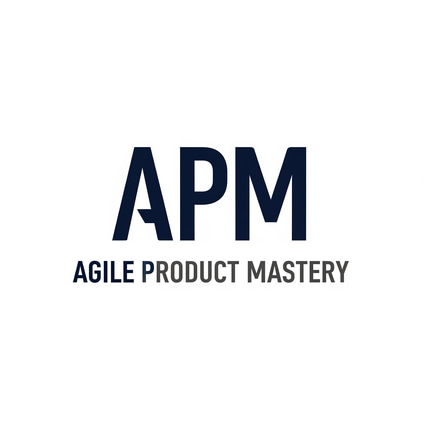AI in the Real World: How Agile Teams Are Using AI to Deliver Faster, Smarter, and Better
See how Agile teams are using AI in real-world product environments to improve delivery speed, backlog decisions, and cross-functional collaboration.
AGILE PRODUCT MANAGEMENTAI IN AGILE DELIVERYPRODUCT TEAM COLLABORATION
Written by: Matt Gregory Founder Agile Product Mastery
6/4/20254 min read


In Parts 1 and 2 of this series, we explored the rise of AI in product management and how AI is supercharging delivery. Now, it’s time to bring it all together.
What does this look like on the ground? How are Agile Product Teams — particularly Business Product Owners — actually using AI in their day-to-day?
In this final installment, we explore real-world use cases, common challenges, and the tools that are driving impact. Whether you’re a seasoned PO or transitioning from project management, this guide will show you how to turn AI into an everyday productivity asset.
1. Prioritization at Scale with Predictive Intelligence
When product backlogs stretch into the hundreds of items, choosing what to do next can stall even the most productive team.
Real Use Case:
A fintech startup uses airfocus AI Assist to auto-prioritize features based on business impact, effort, user sentiment, and stakeholder feedback. The AI flags risky features, suggests grouping low-effort wins together, and visualizes trade-offs in real time.
What This Means for You:
No more drowning in grooming sessions. AI tools can now recommend the next best items based on goals, historical data, and market urgency.
Pro Tip: Run quarterly backlog reviews with AI assistance to validate your roadmap with objective, data-backed insights.
2. Smarter Sprint Planning with Historical Performance Data
AI isn’t just good at helping teams decide what to work on — it also helps them decide how much to take on.
Real Use Case:
A global SaaS firm uses Forecast AI integrated into Jira to analyze past sprint performance, velocity, and team availability. It automatically suggests scope adjustments based on projected output — reducing overcommitment and burnout.
What This Means for You:
No more guessing capacity or relying on gut feel. You can simulate sprint configurations and predict blockers before they hit.
Pro Tip: Use AI insights to justify sprint trade-offs with stakeholders and keep scope realistic.
3. Writing Better User Stories — with AI as a Co-Author
Many Product Owners struggle to write stories that are concise, testable, and technically clear. That’s where generative AI shines.
Real Use Case:
An e-commerce product team uses Notion AI and Jasper to rewrite messy story drafts into clear, behavior-driven user stories. They also use AI to summarize customer feedback and generate acceptance criteria.
What This Means for You:
You’ll save hours in story writing and refinement — and reduce friction between product and engineering.
Pro Tip: Feed your AI story examples with your product’s voice and structure to “train” it over time.
4. Real-Time Feedback Loops with Customer Insights
Speed matters in Agile. The faster you can learn from your users, the faster you can deliver value.
Real Use Case:
A mobile health app team uses Dovetail and Survicate AI to analyze open-ended survey responses, app reviews, and support tickets. The AI identifies recurring issues and clusters them by theme and urgency.
What This Means for You:
Customer insights become actionable in real-time — no more waiting for quarterly reports or lengthy research cycles.
Pro Tip: Set up automated “AI digests” to land in your inbox each week with the top 3 insights from customer feedback.
5. Elevating Retrospectives with Intelligent Insights
Retros are crucial—but time-consuming. AI can help summarize, cluster, and visualize feedback patterns.
Real Use Case:
A distributed Agile team uses Parabol AI to run asynchronous retrospectives. The AI clusters similar feedback, tags sentiment, and suggests action items — turning scattered comments into a focused improvement plan.
What This Means for You:
Your team spends less time organizing and more time acting on improvement opportunities.
Pro Tip: Use the insights from retros to fuel your team’s OKRs or improvement backlog.
6. Bridging the Business–Tech Gap with Visual AI Tools
One of the biggest frustrations for business-side POs? Not fully understanding the tech stack behind their product. AI can visualize it.
Real Use Case:
A Business Product Owner uses Gamma to turn a list of features and systems into an auto-generated, visualized tech stack. They use this to ask better questions during grooming and understand how each system interacts.
What This Means for You:
You don’t need to code — you just need the confidence to speak the language. AI lets you visually navigate complexity with less guesswork.
Pro Tip: Ask your tech leads to validate your AI-generated stack map — it’ll earn you respect and improve your backlog conversations.
7. Unlocking Speed in Documentation and Decision-Making
Whether it’s writing confluence pages, internal FAQs, or decision logs, AI is making it faster.
Real Use Case:
An Agile Delivery Manager uses ChatGPT and Scribe AI to generate sprint summaries, risk logs, and stakeholder updates. What used to take half a day now takes 10 minutes.
What This Means for You:
You gain back valuable time to focus on strategic tasks — like stakeholder engagement and roadmap refinement.
Pro Tip: Document once, reuse often. Use AI to adapt content across audiences (exec, dev, marketing) with the right tone and depth
Common Pitfalls to Avoid
AI is a powerful ally — but only if used wisely. Here are some traps to watch for:
Over-automation: Don’t automate what needs human context (e.g., roadmap vision).
Data quality blind spots: AI is only as good as the data you feed it.
Lack of team buy-in: Bring your devs and designers into your AI adoption process early.
Getting Started: AI Tools for Agile Product Teams
Here’s a shortlist of beginner-friendly AI tools used by Agile teams:
Backlog Prioritization: airfocus, Productboard AI
User Feedback Analysis: Dovetail, Hotjar AI, Survicate
Sprint Planning: Jira Advanced Roadmaps, Forecast
User Story Generation: Notion AI, Jasper
Retrospectives: Parabol AI, TeamRetro AI
Content Summarization: ChatGPT, Scribe AI
Visual Documentation: Gamma, FigJam AI
Coding Assistant: Github Co-Pilot
Final Word: The AI-Augmented Agile Team Is Already Here
The teams thriving in 2025 aren’t just Agile. They’re AI-Augmented Agile. They understand that AI isn’t a shortcut — it’s a multiplier.
If you’re a Business Product Owner, you now have the power to:
Prioritize smarter
Write better stories
Visualize delivery risks
Understand technical trade-offs
Deliver outcomes, not just outputs
And you can do all of that without needing to become a developer.
This is Agile Product Mastery™ in action.
Want to Stay Ahead?
Join the Agile Product Mastery™ community to get exclusive insights, resources, and tools for Business Product Owners mastering tech and AI.
© Agile Product Mastery — Build a career that scales. Not one that burns out.
Powered by Baltimore Advisory Pty Ltd — ABN 97 678 312 475 — All rights reserved
Follow us on LinkedIn
